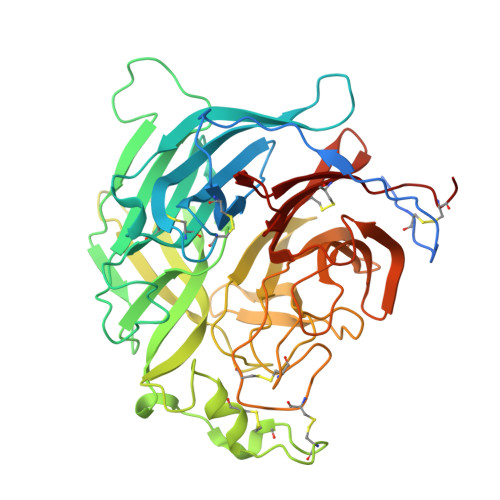Nipah and Hendra Viruses Use an Adjustable Latch in Receptor Engagement.
von Itzstein, M.S., Winger, M., Malde, A.K., Holt, S., McAtamney, S., Hartley-Tassell, L., Ve, T., Maggioni, A., von Itzstein, M.(2025) ACS Infect Dis 11: 2729-2738
- PubMed: 41003672
- DOI: https://doi.org/10.1021/acsinfecdis.4c01040
- Primary Citation of Related Structures:
8VF1 - PubMed Abstract:
Nipah (NiV) and Hendra viruses (HeV) have emerged as deadly zoonotic pathogens over the last three decades. Like all paramyxoviruses, Henipaviruses utilize a surface glycoprotein to attach to and invade targeted cells. Inhibiting this attachment glycoprotein is a promising strategy for developing effective antihenipaviral drugs. A multidisciplinary approach has been employed to investigate the structures of HeV and NiV attachment glycoproteins, identifying a flexible region near their binding site. This region, loop 240, can adopt an open conformation in unliganded attachment glycoproteins and a closed "latch" conformation in the presence of their cognate receptor Ephrin B2. Site-directed mutagenesis of the HeV attachment glycoproteins has shown that the engagement of R242 with Ephrin B2 plays an important role in the binding mechanism. This discovery provides greater insight into the dynamic nature of henipaviral attachment proteins and has implications for antiviral drug development.
- Institute for Biomedicine and Glycomics, Gold Coast Campus, Griffith University Queensland, Southport 4222, Australia.
Organizational Affiliation:


















